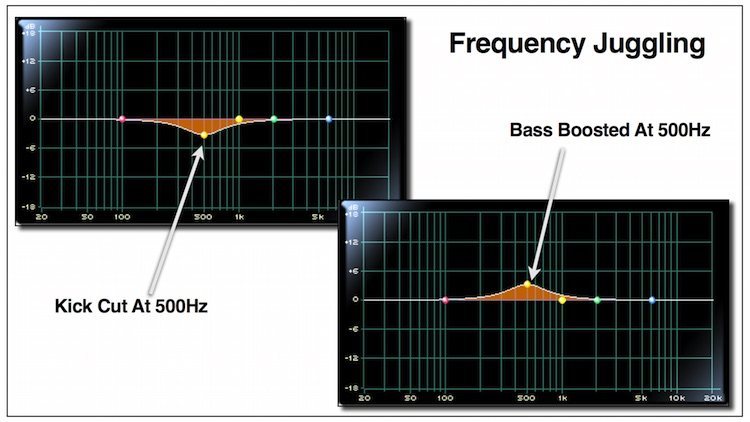- in Book Excerpt , Engineering by Bobby Owsinski
- |
- 1 comments
EQing By Frequency Juggling
 One of the best ways to make all the elements fit in a mix is by frequency juggling. That’s where you make sure that no two instruments are boosted at the same frequency so they never fight for attention in the mix. Here are 3 steps from the 3rd edition of my Mixing Engineer’s Handbook to make frequency juggling work for you, as well as a couple of excellent quotes from Jon Gass and Ed Seay, some of the very best mixers ever.
One of the best ways to make all the elements fit in a mix is by frequency juggling. That’s where you make sure that no two instruments are boosted at the same frequency so they never fight for attention in the mix. Here are 3 steps from the 3rd edition of my Mixing Engineer’s Handbook to make frequency juggling work for you, as well as a couple of excellent quotes from Jon Gass and Ed Seay, some of the very best mixers ever.
Most veteran engineers know that soloing an instrument and equalizing it without hearing the other instruments will probably start making you chase your tail as you make each instrument bigger and brighter sounding. When that happens is that you’ll find in no time the instrument you’re EQing will begin to conflict with other instruments or vocals frequency-wise. That’s why it’s important to listen to other instruments while you’re EQing. By juggling frequencies, they’ll fit together better so that each instrument has its own predominate frequency range. Here’s how it’s done.
1. Start with the rhythm section (bass and drums). The bass should be clear and distinct when played against the drums, especially the kick and snare.
You should be able to hear each instrument distinctly. If not, do the following:
- Make sure that no two equalizers are boosting at the same frequency. If they are, move one to a slightly higher or lower frequency.
- If an instrument is cut at a certain frequency, boost the frequency of the other instrument at that same frequency. For example, if the kick is cut at 500Hz, boost the bass at 500Hz (see the figure on the left).
2. Add the next most predominant element, usually the vocal, and proceed as above.
3. Add the rest of the elements into the mix one by one. As you add each instrument, check it against the previous elements as above.
The idea is to hear each instrument clearly, and the best way for that to happen is for each instrument to live in its own frequency band.
TIP: You most likely will have to EQ in a circle where you start with one instrument, tweak another that’s clashing with it, return to the original one to tweak it, and then go back again over and over until you achieve the desired separation.
Jon Gass: I really start searching out the frequencies that are clashing or rubbing against each other, but I really try to keep the whole picture in there most of the time as opposed to really isolating things too much. If there are two or three instruments that are clashing, that’s probably where I get more into the solo if I need to kind of hear the whole natural sound of the instrument.
Ed Seay: Frequency juggling is important. You don’t EQ everything in the same place. You don’t EQ 3k on the vocal and the guitar and the bass and the synth and the piano, because then you have such a buildup there that you have a frequency war going on. Sometimes you can say, “Well, the piano doesn’t need 3k, so let’s go lower, or let’s go higher,” or “This vocal will pop through if we shine the light not in his nose, but maybe towards his forehead.” In so doing, you can make things audible and everybody can get some camera time.”
You can read more from The Mixing Engineer’s Handbook and my other books on the excerpt section of bobbyowsinski.com.

